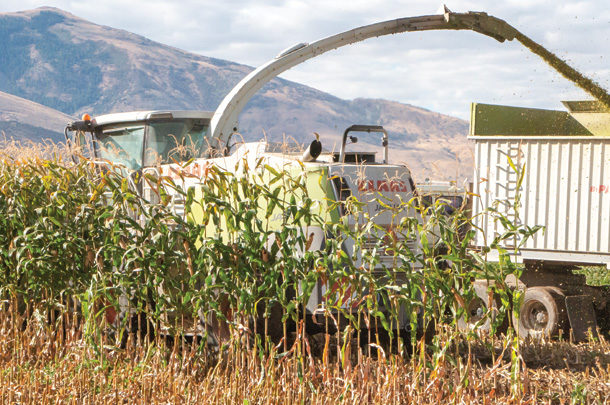But how do you achieve the nutrient-packed forage needed for your dairy? Let’s answer the top questions around how to get the most out of your corn silage.
What are the key considerations when thinking about corn silage quality?
It’s all about the cow. High-quality corn silage has many benefits, including providing energy, protein and fiber for cattle with minimal nutritional losses. Silage contributes more than 50% of the nutrition for dairy cattle production. Producers should be considering several things, including chop length, kernel processing and nutritional availability.
Why is chop length important?
Chop length can greatly affect the nutritional value of the silage. To facilitate a good fermentation process, silage needs to be chopped fine enough to allow for dense packing. However, the chop length should be long enough to promote cud chewing. This posed an intriguing challenge for many researchers, leading to even more questions.
How do I choose the right chop length and processor?
Historically, a couple of chopping styles were established over the years and are still used today.
Short-chopped corn silage
Chop lengths of 3.5 to 12 millimeters (1/32- to 1/2-inch) fall into the short-chopped silage group. Short chopping is used both for silage destined for biogas facilities and for European dairy and beef cattle feed. The requirement here is for homogeneous, short and extremely fine plant material. A very high standard of kernel splitting is also called for. When used as cattle feed, this silage is often complemented with sufficient quantities of alternative long fiber material. Short chop is also used for operations that have silos that can’t handle longer material or have small tractors to pack the pit. High milk yield is not the focus with short-chopped silage.
Classic-chopped corn silage
Classic-chopped silage covers the chop length range from 12 to 22 millimeters (1/2- to 7/8-inch) and has been the established “standard” in many areas for years. In addition to splitting the kernels, the need here is for improved physical effectiveness. Long-chopped silage has a greater physical effect on fiber, which promotes rumination; however, the reduced packing density of the silage pile has traditionally been one of its shortcomings.
Something different
A feed conditioning process was invented by American dairy nutritionists that has come into its own over the last decade. It involves chopping silage at even greater lengths than classic-chopped forage, ranging from 21 to 30 millimeters (7/8- to 1 3/16-inch), and then processing the chopped material with a special processor. The rollers on this patented processor, which have counterdirectional helical grooves, chop up the cob fragments completely and crush the kernels to split them thoroughly. In addition, the stalk fragments are also shredded longitudinally into strings and their bark layer is peeled, thanks to the special surface of the rollers. This intensive processing multiplies the surface of the chopped material many times, resulting in significantly improved bacterial fermentation during ensiling and, above all, during digestion in the cow’s rumen. The highly processed, long-cut corn silage has the added benefit of superior packing density – a limitation of standard long-cut silage.
Trials conducted by the University of Wisconsin in 2012 show this process dramatically increases the physical effectiveness of corn silage in the rumen while also improving the availability of the starch contained in all parts of the plant. As a result, the daily milk yield in the herds studied increased by up to 2.4 pounds per cow. Also, the rumen-friendly structure of the silage improved herd health.
But it’s not just a benefit for dairy cattle. Karla Jenkins, a cow-calf researcher from the University of Nebraska, explains how this process could affect finishing beef cattle. In a Nebraska study, cattle fed rations containing this longer-chopped and conditioned corn silage experienced a 2.9% greater average daily gain (ADG) and a 4.4% greater feed-to-gain ratio when compared to control groups fed conventionally chopped and processed silage.
No matter how you slice it, the quality of silage can make a significant difference in cattle performance and health.












